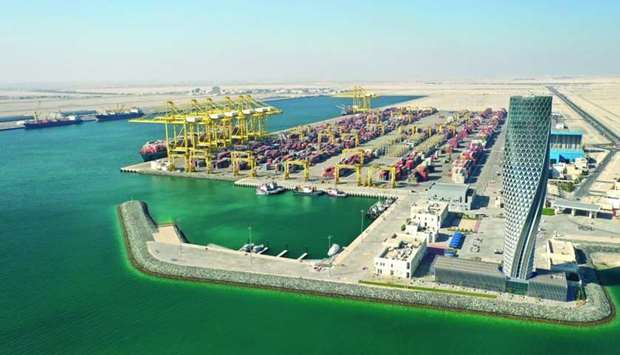Qatar’s three ports – Hamad, Doha and Al Ruwais – witnessed robust expansion in cargo and container handling volumes in March this year despite the challenges on account of the pandemic Covid-19.
The general cargo handling registered a 34.57% increase year-on-year to 131,472 tons in March 2020. It saw a stupendous 53.02% surge month-on-month, according to the statistics released in Mwani Qatar’s tweet.
The general cargo movement has consistently increased from 57,016 tons in January and 85,916 tons in March this year.
The ports handled a total of 6,088 vehicles (RORO), which witnessed 2.34% and 5.88% growth on yearly and monthly basis respectively in the review period. It was 8,638 and 5,750 units in January and February this year.
The container handling through the three ports stood at 112,730 TEUs (twenty-foot equivalent units), which increased 1.4% and 5.05% year-on-year and month-on-month respectively in March 2020. The container movement rather had a chequered path with it reporting 115,837 TEUs in January and 107,311 TEUs in the subsequent month of 2020.
However, during the period in review, the number of ships calling on these ports were 225, representing 22.95% and 21.33% shrinkage on yearly and monthly basis respectively. As many as 290 ships were docked in January and 286 in February this year.
Hamad Port’s strategic geographical location offers opportunities to create cargo movement towards the upper Gulf, supporting countries such as Kuwait and Iraq, and south towards Oman, QTerminals chief executive Neville Bissett had earlier said.
The works on the 403,500 sqm container terminal 2 (CT2) at the Hamad Port have already begun as part of the country’s expansion strategy in its maritime sector.
With the pandemic causing disruption to the global economy and trade, the global maritime industry is set to bear the brunt and the shipping demand is expected to shrink on falling manufacturing output.
The three ports had handled 59,601 livestock in March this year, which witnessed 3.95% and 30.41% decline on yearly and monthly basis respectively. The livestock handled through the ports stood at 73,585 heads in January and 85,643 heads in February 2020.
The building materials handled amounted to 41,554 tons, which represented 6.05% and 76.21% contraction year-on-year and month-on-month respectively this February. Their handling stood at 16,866 tons and 23,582 tons in January and February this year respectively.
Besides the general cargoes, the Al Ruwais port is now handling the increased demand for foodstuff and other commodities. It provides a ready solution by acting as gateway for fresh commodities from neighboring countries.
About 80% of world goods trade by volume is carried by sea and China is home to seven of the world’s ten busiest container ports, according to the United Nations Conference on Trade and Development.
Gulf Times
01/04/2020























































